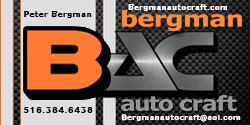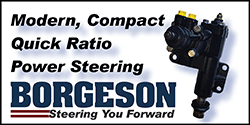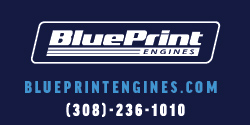gzig5
Well-Known Member
I hope you’ll all stay with me on this because I can get a little verbose. Hopefully it will make for some interesting reading and some discussion at the end. I want to put out a build thread on the stock stroke 340 I’m having done by @NC Engine Builder. According to Shawn it is a relatively mild build, and I’m sure that it is compared to some of the stuff he gets to work on, but for me it will be the stoutest motor I’ve had. I’m a lifelong Mopar guy. My first car in 1983 was a 72 Barracuda 318/904, then a 77 Aspen RT with 318/A833OD and moon roof. We had several Dusters, Chargers, Cordobas, Satellites, and Sport Furys over the years. This motor will be going into my 73 Cuda that I hope to do a lot of road course racing in and drive on the street regularly. Might do some drag racing but the chassis is being setup to handle and stop. I hang out at FEBO as well, but this story is about the motor and there is usually more traffic on FABO. Car was an automatic but I’m converting to an A833 four-speed. Rear-end will be a B-body 8 ¾ with spring relocation shackles for tire clearance, sporting a 3.55 SureGrip. May need to go 3.91 or steeper but that is going to be getting into overdrive territory, which I hope to hold off on for a while.
So the story of this car is a long ordeal over many years so far but I’ll try to cut to the chase and stick to the motor. Motor/trans was non-numbers matching and didn’t run when I got it. It’s a 71 340 standard bore block and 2.02” J-heads. It was road hard and put up wet by previous owners, and was a bit of a half-assed assembly job as it turned out. I redid the ignition wiring and a full tune-up and oil change which including dumping about a quart of fuel out of the oil, so the 4160 carb was rebuilt and I got it running. Ran OK, but definitely not great. Started driving and making improvements over the next 18 months and then found out that it was unsafe to drive due to improper repair that was hidden. Engine had to come out to fix the chassis so I took the opportunity to disassemble it in order to understand what was in it. Turns out it had 10:1 pistons, standard 340 cam, and -.010” forged crank (later realized that it was a 318 crank because the journals were not drilled. Probably was way out of balance with 340 pistons). As I took the number seven piston out, the compression ring fell in two pieces. It was cracked and let go when it could expand. I was going to just re-ring and drive it for a while but I realized that it had about .005” taper in the bores. Mike from B3 suggested that a rigid hone might take some of that taper out and still allow use of the stock pistons. Turns out the shop I asked to do that work just ran a ball hone though and did a sketchy job on the hot tank, not getting all the plugs and junk out. A real cluster.
So the story of this car is a long ordeal over many years so far but I’ll try to cut to the chase and stick to the motor. Motor/trans was non-numbers matching and didn’t run when I got it. It’s a 71 340 standard bore block and 2.02” J-heads. It was road hard and put up wet by previous owners, and was a bit of a half-assed assembly job as it turned out. I redid the ignition wiring and a full tune-up and oil change which including dumping about a quart of fuel out of the oil, so the 4160 carb was rebuilt and I got it running. Ran OK, but definitely not great. Started driving and making improvements over the next 18 months and then found out that it was unsafe to drive due to improper repair that was hidden. Engine had to come out to fix the chassis so I took the opportunity to disassemble it in order to understand what was in it. Turns out it had 10:1 pistons, standard 340 cam, and -.010” forged crank (later realized that it was a 318 crank because the journals were not drilled. Probably was way out of balance with 340 pistons). As I took the number seven piston out, the compression ring fell in two pieces. It was cracked and let go when it could expand. I was going to just re-ring and drive it for a while but I realized that it had about .005” taper in the bores. Mike from B3 suggested that a rigid hone might take some of that taper out and still allow use of the stock pistons. Turns out the shop I asked to do that work just ran a ball hone though and did a sketchy job on the hot tank, not getting all the plugs and junk out. A real cluster.
















